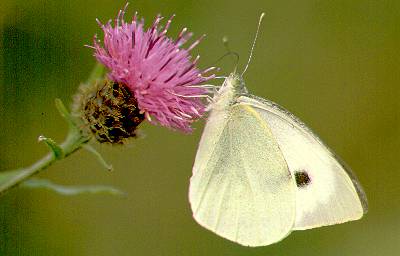 |
| The marmalade hoverfly, Episyrphus balteatus, on Meconopsis cambrica in the garden |
I freely admit that I'm no insect expert but my training as a zoologist / ecologist does allow me to use taxonomic keys to roughly identify most of the larger insects down to family or even genus level. After that I'm reliant on the quality of my photographs to pick out identifying features which can help in the trawl through Google images and other resources to identify particular species. So it is with hoverflies.
Beyond a vague knowledge that there are quite a few different species in the UK (about 250), that many mimic wasps and bees in their protective coloration, and they act as efficient - if indiscriminate - pollinators I'd never really looked at them in any detail. By 2010, however, I'd put together the macro flash rig I illustrated in the previous post and was looking for subjects. And hoverflies suddenly swam into focus.
I don't specifically garden for pollen feeding insects but I do grow a lot of plants that provide abundant sources throughout the warmer months. Which means the garden is a good source of subjects. I also live close to one of Plymouth's suburban nature reserves and walks through there are usually productive. So it was that I started to put together quite a few photos. And then the ID problems started.
Some were easy.
Episyrphus balteatus, the marmalade hoverfly, is pretty distinctive in its orange and black markings. Equally easy to ID was the long snouted
Rhingia campestris. You can't really mistake it for anything else - even though I only saw it once and only managed a single shot earlier this year and I often need a few for ID purposes.
 |
| Episyrphus balteatus |
 |
| Rhingia campestris in the local nature reserve |
Also distinctive is the yellow and black vertical banding on the thorax of
Helophilus pendulus. I should probably be worried about finding this in the garden. The larvae live in muddy ponds and ditches - which suggests its time to finally do some cleaning in my little garden pond. A messy job that I've been putting off.
 |
| Helophilus pendulus in the garden |
Some of the other wasp mimic hoverflies are harder to tell apart for the amateur insect photographer. Take the following two:
 |
| Meliscaeva cinctella |
 |
| Syrphus ribesii |
Taken moments apart on the same flower head, it was only when I got the shots uploaded after I returned home that I realised I'd captured two entirely different species. I simply didn't (still don't) know hoverflies well enough to have an instinctive knowledge of them. An important lesson comes out of that. With unfamiliar wildlife and the marginal cost per shot of digital it makes sense to keep shooting even if you think you've already captured a good shot of your subject. You may be capturing something completely different without realising it.
I'd like to think I was working to that philosophy when I took this capture of
Myathropa florea feeding on my
Sedum spectabile earlier this year. It's not one of my better shots - but I could easily have ignored the hoverfly thinking it was one I'd already photographed.
 |
| Myathropa florea |
Then there are the hoverflies that are relatively easy to identify to the genus level but after that it's a nightmare.
Sphaerophoria is a case in point. Fifteen British species and the only one that can be identified with certainty from photographs is the long bodied male
Sphaerophoria scripta. The one below is female - you can tell from the wide separation of the compound eyes, males are narrowly separated
- but apparently they can only be correctly identified from microscopic differences in the genitalia. So, much as I would like to identify this one as
Sphaerophoria fatarum - the markings match - I can't.
 |
| Sphaerophoria sp. Possibly S.fatarum |
At least these two
Eristalis honey bee mimics are easier to identify. At a distance the mimicry is effective - but close up it falls apart a little.
 |
| Eristalis pertinax |
 |
| Eristalis tenax |
 |
| Apis mellifera, the honey bee the two Eristalis are mimicing |
So far, I've only just lightly scratched the surface of hoverfly photography. The challenges for next year will be to shoot (and hopefully identify!) more species and to start shooting more natural light shots with my newly acquired Sigma 180mm EX HSM f3.5 macro. But at least I can now identify two of the three hoverflies I shot in early September this year, companionably feeding on the abundant pollen of
Meconopsis cambrica.
 |
| Syrphus ribesii (t), Eristalis pertinax (r) and an unknown small species on Meconopsis cambrica |






































